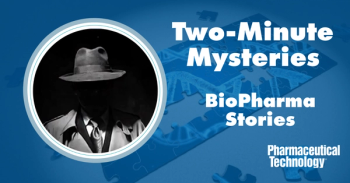
How Big Biopharma Investment in CGTs Will Redefine the Industry Pipeline
Key Takeaways
- Large biopharma companies are crucial for CGT commercialization, providing stability, scale, and strategic innovation direction.
- Expansion of CGT applications beyond oncology includes autoimmune diseases and neuroscience, driven by major biopharma firms.
Industry leaders at Meeting on the Mesa discussed big biopharma’s role in next-step CGT scale, focusing on manufacturing quality and patient access.
The path forward for cell and gene therapies (CGTs) has reached a critical juncture, following a period marked by both scientific exuberance and subsequent funding dips, the latter deemed a market “valley of death,” said industry leaders during a panel discussion at the
At the "
Daniel Palmacci, head and president of Specialized Modalities, Lonza, set the tone for the discussion by noting that big biopharma is "always … about big moves." The consensus among the industry leaders at the discussion was that these larger organizations possess the long-term commitment and financial weight necessary to overcome CGTs’ historical challenges, which is crucial news for smaller manufacturers and developers seeking reliable partnerships and a robust ecosystem for future innovation.
How are major biopharma firms expanding CGT application beyond oncology?
A significant aspect of big biopharma’s influence is directing R&D toward new therapeutic areas. For example, Novartis, which pioneered the first FDA-approved chimeric antigen receptor T cell (CAR-T) therapy, Kymriah (tisagenlecleucel) (2), is now looking to apply that foundational technology to broader indications, according to Christy Siegel, senior vice-president and US therapeutic area head, Immunology, Novartis, in the panel. Siegel spoke about leveraging past experience to future success. "I think [what] we need to think about [is that] what got us here, in Marshall Goldsmith's terms, won't be what gets us there in the future," she stated.
Novartis’ expansion includes applying CAR-T to autoimmune diseases, such as lupus and rheumatoid arthritis, and exploring neuroscience applications in areas like multiple sclerosis and myasthenia gravis, which would serve populations with high unmet need, Siegel noted.
This strategic diversification is also evident in gene therapy. Richard Wilson, senior vice-president, Primary Focus Lead, Genetic Regulation, Astellas, confirmed the critical function of major organizations, noting, "I think there's a really important role for larger companies here to be the engine of that next step." Astellas focuses its adeno-associated virus (AAV) portfolio on genetic regulation for neurological and neuromuscular conditions. In addition, companies like Kite, a Gilead company, are actively exploring next-generation delivery methods. Richard Smith, PhD, vice-president of Drug Discovery at Kite, stated that, while Kite remains committed to its autologous platform, the company is thinking about getting involved with in-vivo CAR-T therapy "in a very big way." Smith emphasized that the company viewed breakthroughs in the in-vivo space as a potential "existential threat" that necessitates active investment.
How will infrastructure investment address cost and access?
For CGT manufacturers and developers, resolving manufacturing consistency and supply chain stability is paramount, as highlighted by the panelists. Large biopharma companies are addressing this concern through significant capital investments and process improvements. Wilson noted dramatic internal improvements in quality, reproducibility, and, critically, costs at Astellas’ Sanford, NC facility, suggesting that manufacturing hurdles may not be as daunting as expected. Meanwhile, Novartis is progressing its novel autologous CAR-T program, YTB323 (3), which stems from the company’s T-Charge platform, a next-generation CAR-T platform (4). This next-generation platform will enhance supply chain stability and achieve a faster turnaround time for healthcare professionals, Siegel explained.
However, the infrastructure challenge extends beyond the facility floor, as Fred Chereau, senior vice-president, Strategy and Business Development, Alexion, an AstraZeneca company, pointed out. Size provides an essential advantage, he highlighted, stating, "The beauty of us being here today is that only large companies can be on every front. When you are in a small company, which has been my case for most of my career, you have to focus." This scope allows big biopharma to tackle infrastructure, R&D, and commercialization simultaneously, he noted.
Are patient-access models ready for widespread CGT use?
The biggest hurdle for the future success of CGTs is streamlining the complex patient journey and making treatments accessible as standard-of-care. The panelists stressed how this particular hurdle impacts the entire biopharmaceutical industry and calls for new commercial frameworks and regulatory paths. For conditions like lupus, where patients are often young women and mothers (5), the logistical burden—such as driving 150 miles and moving for a month for treatment, as an example—is often prohibitive, Siegel pointed out. She also highlighted the need to enable treatment in the outpatient setting and educate community-based specialists (e.g., rheumatologists) who currently may not understand CAR-T therapy.
"It's more complicated than that, [which] seems to be the answer I give to most of the leaders outside of research," Smith admitted, pointing out the practical difficulties in tackling the complexity of patient access when it comes to CAR-T therapy.
Ultimately, the commitment of big biopharma is accelerating technology development and stabilizing the field, the panelists concurred. By prioritizing patient access, refining commercial models, and integrating cultures through strategic acquisitions, these companies are ensuring that CGTs transition from niche innovations to reliable and scalable components of the broader biopharmaceutical armamentarium, the panel concluded.
References
1. Palmacci, D.; Chereau, F.; Siegel, C.; Smith, R.; Wilson, R. Scaling the Future: How Big Biopharma is Influencing What’s Next in Cell and Gene Therapy. Presentation at Cell and Gene Meeting on the Mesa. Oct. 7, 2025.
2. FDA.
3. Dickinson, M. J.; Barba, P.; Jäger, U.; et al. A Novel Autologous CAR-T Therapy, YTB323, with Preserved T-cell Stemness Shows Enhanced CAR T-cell Efficacy in Preclinical and Early Clinical Development. Cancer Discovery 2023, 13 (9), 1982–1997. DOI:
4. Novartis.
5. CDC.
Newsletter
Stay at the forefront of biopharmaceutical innovation—subscribe to BioPharm International for expert insights on drug development, manufacturing, compliance, and more.





